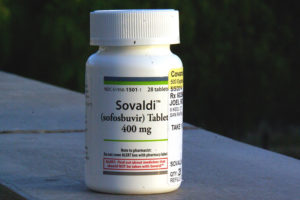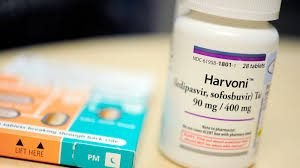
High prices for new hepatitis C drugs have forced California health officials to budget nearly $1 billion next year in additional payments for managed care plans to treat Medi-Cal patients infected with the disease.
The health insurance industry calls the arrangement a “patch on the problem” of unsustainable drug pricing.
“These drugs are priced too high,” said Charles Bacchi, President and CEO of the California Association of Health Plans. “There has to be a better way to deal with this.”
The money will be used to treat about 14,300 hepatitis C patients on Medi-Cal, the state’s Medicaid program. They are enrolled in managed care programs run by commercial insurers, which are paid a fixed sum to care for groups of patients. The extra funds will pay for expensive hepatitis C drugs such as Sovaldi and Harvoni. About 30 percent of that money will come from the state budget, with federal dollars paying for the rest.
The companies that make these drugs, which can cure the infectious viral liver disease, have come under fire in recent years for their high prices. Sovaldi has been priced at about $84,000 for a 12-week course of treatment, but a newer regimen has been priced at $54,000.
The news of next year’s spiraling Medi-Cal drug costs will likely come up at a July 28 hearing in the state’s Assembly Health Committee on controversial legislation that would require drug makers to be more transparent about price increases.
The bill would oblige manufacturers to disclose drug price increases of 10 percent or more, as well as the introduction of drugs costing more than $10,000 per year or course of treatment. It would also require health insurers to report how much of each premium dollar is spent on prescription drugs.
Overall spending on the hepatitis C treatments is rising because more patients are taking the drug — almost quadruple the number treated less than two years ago, according to state officials.
The rising number of users is likely due to “a growing awareness of the new drugs that are out there for the treatment,” said Lindy Harrington, deputy director of health care financing with the California Department of Health Care Services.
Despite the state’s soaring expense, the overall price per patient appears to be declining. Joel Hay, pharmaceutical economist at the University of Southern California, said the decreased costs are a result of new market competition from hepatitis C treatments marketed by AbbVie and Merck.
Medi-Cal health plans received an average of $106, 926 per hepatitis C patient during the first 16 months of the funding arrangement, which started in 2014. Next fiscal year, insurers will get only $65,286 per person.
Last summer, Medi-Cal eased restrictions on who can receive the drugs. Patients with less advanced liver disease can now get them, as well as active IV drug users and women who plan to get pregnant. But Harrington said the new medical criteria for coverage are not necessarily what’s behind the increased use.
Although pricey, Hay said the value of the new generation of hepatitis C drugs is well worth the cost.
“These are amazing drugs,” Hay said. “How many drugs out there cure a disease?”
There are no cures for diseases such as HIV, diabetes, muscular dystrophy or asthma, he noted. But companies that increase the prices of long-standing generic drugs or command high prices for treatments that “do very little good” should come under scrutiny, he said.
“If we don’t reward people to cure the disease, we’re not going to get cures for the disease,” Hay said. “What we shouldn’t be doing is rewarding people for a new cancer treatment that adds three weeks of life.”
The Pharmaceutical Researchers and Manufacturers of America (PhRMA) said in a written statement that the introduction of new drug treatments on the market drives prices down through competition. The trade association also noted that Medicaid programs get some of the lowest negotiated prices from manufacturers.
But the cost to Medi-Cal for treating hepatitis C next year is a serious concern to state Senator Ed Hernandez (D-West Covina), the chairman of the Senate Health Committee.
”Every [company] should have a right to make a profit, but not an excessive profit to the extent that it costs taxpayers not only in tax dollars but also in premium dollars,” said Hernandez, who authored the drug price transparency bill.
Medi-Cal administrators say supplemental payments to health plans for hepatitis C drugs are expected to continue in the coming years. It remains difficult to tell whether the treatments will result in future savings.
“An expensive drug that cures a disease may prevent even higher costs down the road,” said Tony Cava, public information officer for DHCS.
